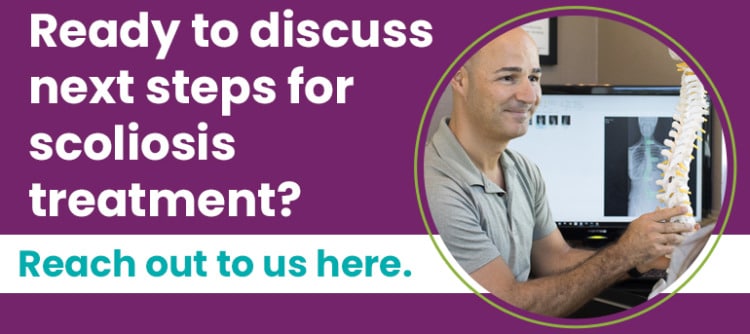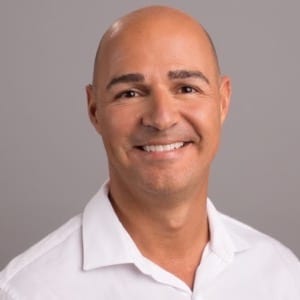Scoliosis Screening: Early Detection and Its Importance
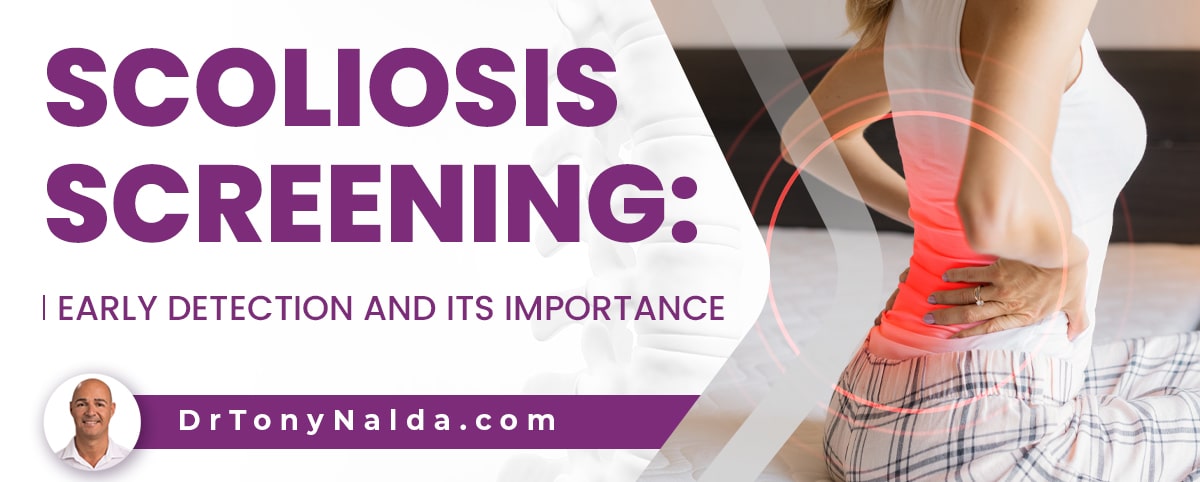
Scoliosis screening means looking for indicators of scoliosis, and as children are the most commonly diagnosed and the most at risk for rapid progression, screening should start at a young age. There are also certain risk factors that make screening more necessary.
With progressive conditions like scoliosis, when treatment is started can be an important factor. There are never treatment guarantees, but success is more likely with early detection because it can mean early intervention, depending on the chosen treatment approach.
The importance of early detection is that it can mean treatment is started when conditions are at their mildest and most likely to respond well.
Table of Contents
What is Scoliosis Screening?
Scoliosis is a highly-prevalent spinal condition that causes the spine to bend unnaturally to the side and rotate.
There are different types of scoliosis from idiopathic scoliosis to neuromuscular scoliosis, degenerative, and congenital scoliosis, and the condition can affect all ages but is most commonly diagnosed in children.
Current estimates by the scoliosis research society have close to seven million people currently living with scoliosis in the United States alone, and as the leading spinal deformity amongst school-aged children, school scoliosis screening was implemented.
While scoliosis screening in schools used to be mandatory and widely practiced, it's now only practiced in certain schools, shifting the onus of early detection onto the shoulders of parents, caregivers, and patients themselves.
A positive scoliosis screening exam can mean diagnosing and treating conditions when the unnatural spinal curvature is still flexible and more likely to be responsive.
Scoliosis screening involves a physical examination looking for indicators of scoliosis most visible with an adams forward bend test.
Adam's Forward Bend Test
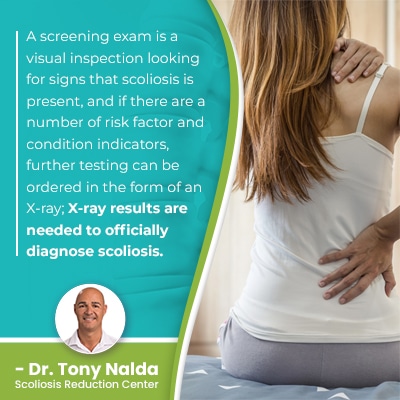 As scoliosis develops and progresses, the size of the unnatural spinal curve will increase, as will its effects.
As scoliosis develops and progresses, the size of the unnatural spinal curve will increase, as will its effects.
The main effect of scoliosis in children involves postural changes as the condition's uneven forces disrupt the body's overall symmetry.
A screening exam is a visual inspection looking for signs that scoliosis is present, and if there are a number of risk factor and condition indicators, further testing can be ordered in the form of an X-ray; X-ray results are needed to officially diagnose scoliosis.
An X-ray is needed to confirm a patient's Cobb angle measurement and the spine's rotational component, and a screening program identifies individuals requiring further testing.
An adam's forward bend test is the gold standard of scoliosis screening exams; it involves having a patient stand in front of me and bend forward at the hips with the back parallel to the floor and the arms hanging as if reaching toward the toes.
When a child bends forward, the spine is highly visible, as are any trunk asymmetries; when combined with the use of a Scoliometer, the angle of trunk rotation can also be indicated.
Common trunk asymmetries to look for include uneven shoulders, uneven shoulder blades, a rib hump, and uneven hip; if the spine's unnatural bend is visible and any of these indicators are present, further testing is warranted.
It's easier to detect scoliosis in adults because scoliosis becomes a compressive condition once skeletal maturity is reached, making it painful.
So if a young patient's screening examination leads to an X-ray and a scoliosis diagnosis, what's next?
The Benefit of Early Detection is Early Intervention
Scoliosis is a progressive condition whose nature is to get more severe over time, so early detection can mean early intervention started while conditions are at their mildest.
Scoliosis severity ranges from a mild curve to moderate scoliosis, severe, and very severe scoliosis cases.
As mild scoliosis means smaller curves, there are benefits associated with diagnosing conditions early, while still mild.
Smaller curves are less complex to treat, and as progression makes the spine increasingly rigid and less responsive, starting treatment before significant progression has occurred can mean starting treatment when conditions are going to be at their most responsive.
However, the benefit of early detection is only available to those whose treatment approach is proactive and starts immediately following a diagnosis.
In the condition's most-prevalent type, adolescent idiopathic scoliosis, early detection is particularly important because while we don't fully understand what causes idiopathic scoliosis to develop, we know it's growth that triggers progression.
Adolescent Idiopathic Scoliosis
Scoliosis affects all ages, but the most common type is adolescent idiopathic scoliosis diagnosed between the ages of 10 and reaching skeletal maturity.
Adolescent scoliosis is the most likely to face rapid-phase progression because of the rapid and unpredictable growth spurts of puberty.
The danger of progression is that it makes scoliosis more difficult to treat and the condition's effects more established and difficult to reverse and/or improve.
In most cases, it's more effective to proactively work towards preventing progression and increasing effects than it is to attempt to reverse the effects once they've become established.
Adolescent idiopathic scoliosis that's detected and tested early is more likely to respond to non surgical treatment, sparing patients the risks and potential complications associated with a surgical treatment response.
So another potential benefit of early detection is that it makes a future surgical recommendation less likely.
Early Detection Can Help Patients Avoid the Need for Surgery
 There are two main treatment responses to scoliosis: conservative non surgical treatment and a traditional surgical response.
There are two main treatment responses to scoliosis: conservative non surgical treatment and a traditional surgical response.
Traditional scoliosis treatment isn't proactive, it's reactive; it doesn't start treatment immediately following a diagnosis and is more about responding with treatment once a certain level of progression has already occurred.
A common recommendation statement for cases of mild scoliosis is to watch and wait for continued progression, but particularly when talking about adolescents who can undergo a significant growth spurt and related progression in the interim between check ups, this can be dangerous.
Allowing a curve to progress unimpeded can mean allowing rapid-phase progression to occur that's difficult to reverse.
Most patients respond well to early detection and intervention.
For those on the path of traditional treatment, only traditional bracing is applied for moderate cases, and for a curve greater than 40 degrees, they are commonly recommended for spinal fusion surgery, but little was done beforehand in a proactive effort to prevent progression.
Spinal Fusion Surgery
While orthopedic surgeons have their patients' best interests at heart, scoliosis surgery is invasive, risky, and can permanently alter the strength and function of the spine.
There are different types of spinal fusion, but the basic process involves locating the most-tilted vertebrae at the curve's apex and removing the intervertebral discs that sit between adjacent vertebrae to be fused.
The vertebral bodies are fused into one solid bone so they can't become more unnaturally tilted over time, and metal rods are attached to the spine with pedicle screws to hold the spine in place; hardware attached is permanent.
Fusing the spine can straighten it, but the way it does so is contrary to the spine's movement-based design, and this can mean losing spinal flexibility and a reduced range of motion.
A fused spine is also weaker and more vulnerable to injury, and the reality is that many children and adult scoliosis patients don't need surgery, particularly with early detection and intervention.
Conclusion
Screening for scoliosis is important because it can lead to early detection, intervention, and treatment success.
While there are no treatment guarantees, when scoliosis screening successfully identifies and diagnoses scoliosis while mild, the opportunity is there to start treatment when conditions are going to be their most responsive.
The benefits of early detection, however, are only available to those who commit to a modern conservative non surgical treatment approach that combines a number of treatment options.
Some school districts mandate scoliosis screening conducted by a school nurse, but concerns regarding over-referring and costs means school screening isn't always consistent.
It's important that parents and caregivers know the condition's subtle signs to watch for, particularly if the risk factors of gender, age, and a family history are present.
Particularly with early-onset juvenile scoliosis, starting treatment prior to the first pubescent growth spurt can yield impressive results as it's growth that triggers progression.
If there is a family history of scoliosis present, a child's doctor should be screening for scoliosis during routine check ups, with the goal of finding indicators early that can lead to early diagnosis and proactive treatment.
Here at the Scoliosis Reduction Center®, the best way to start the treatment journey is to detect scoliosis early in its progressive line, start to treat scoliosis immediately following the diagnosis, and work towards impacting the condition on every level.
Dr. Tony Nalda
DOCTOR OF CHIROPRACTIC
After receiving an undergraduate degree in psychology and his Doctorate of Chiropractic from Life University, Dr. Nalda settled in Celebration, Florida and proceeded to build one of Central Florida’s most successful chiropractic clinics.
His experience with patients suffering from scoliosis, and the confusion and frustration they faced, led him to seek a specialty in scoliosis care. In 2006 he completed his Intensive Care Certification from CLEAR Institute, a leading scoliosis educational and certification center.
About Dr. Tony Nalda
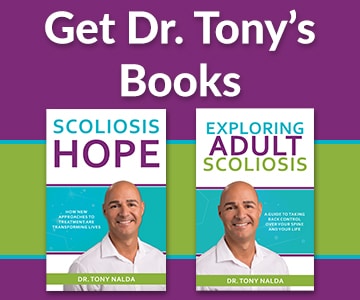 Ready to explore scoliosis treatment? Contact Us Now
Ready to explore scoliosis treatment? Contact Us Now